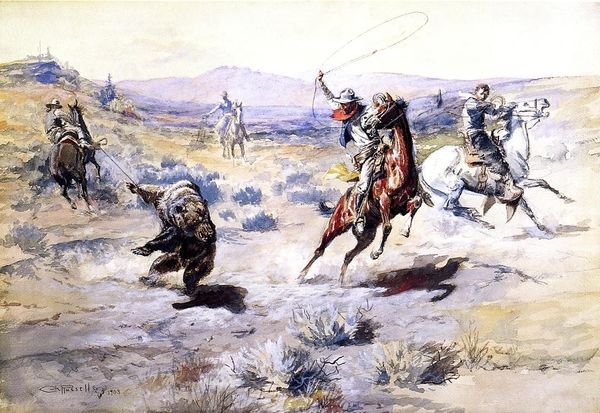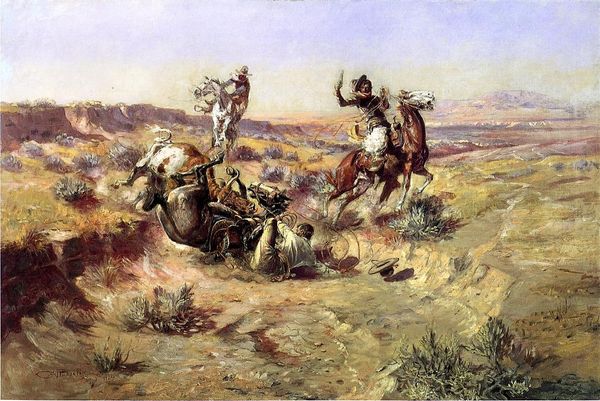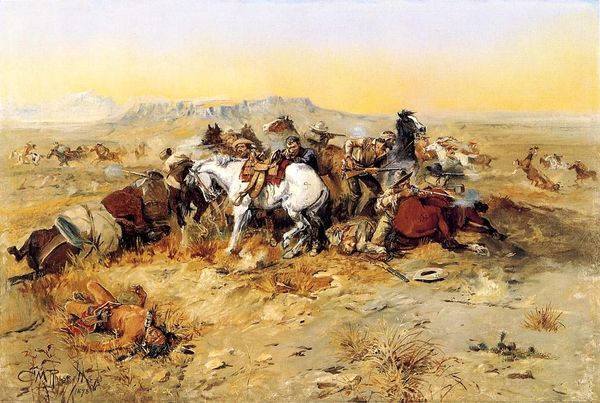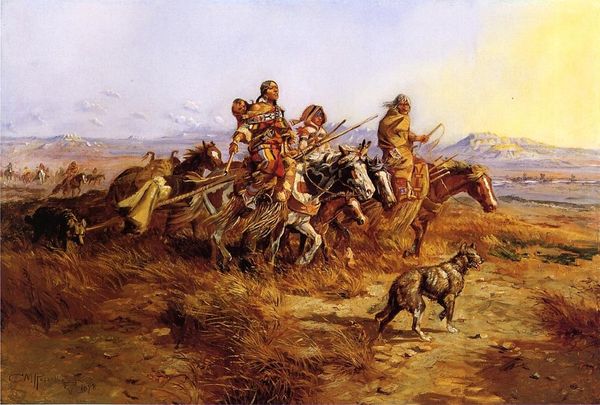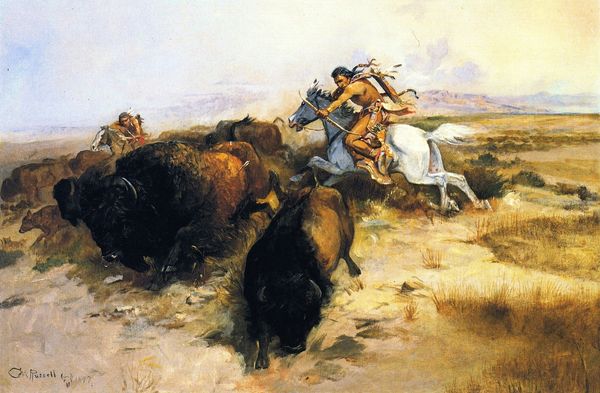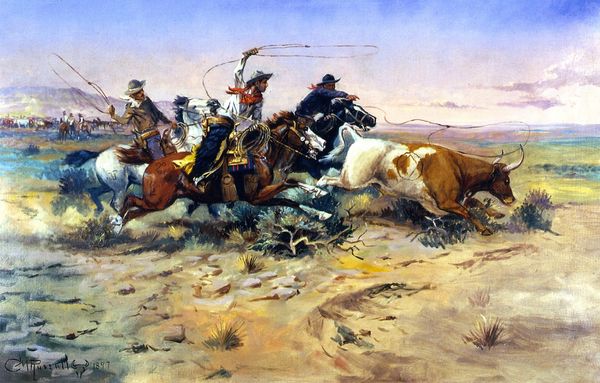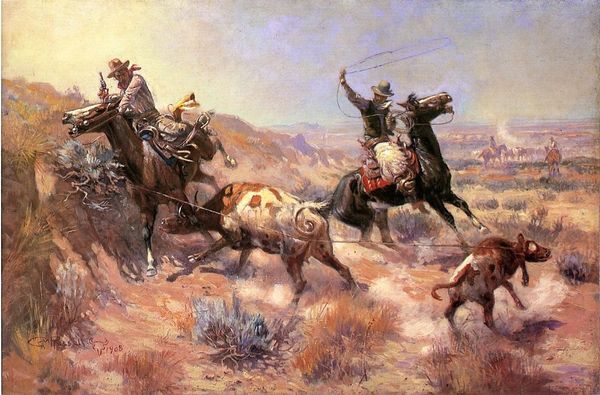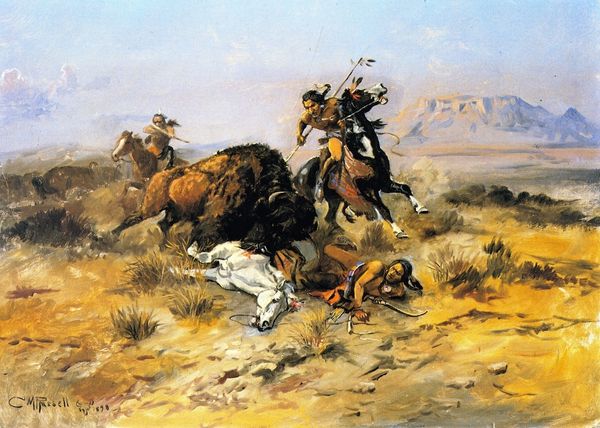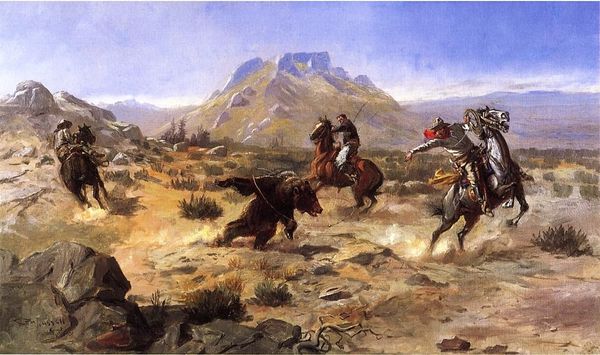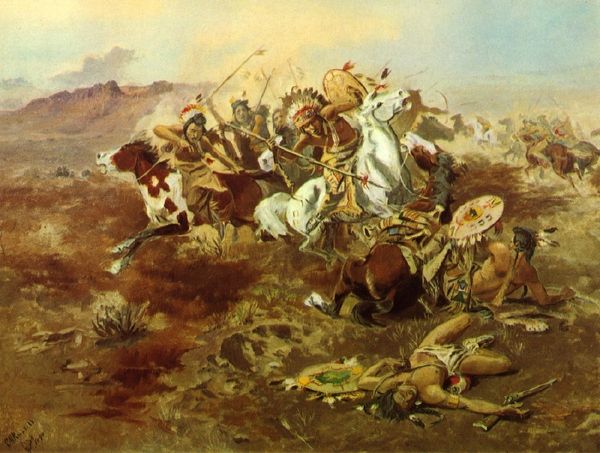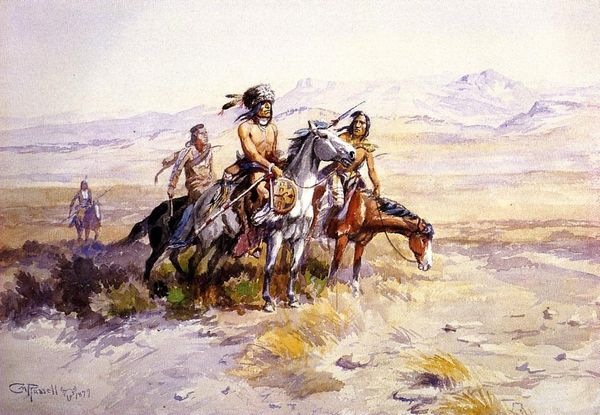
Copyright: Public domain
Curator: Take a look at Charles M. Russell's painting, "The Cinch Ring," completed in 1909. What catches your eye right away? Editor: The energy! It's a whirlwind of dust, panicked animals, and human struggle. The dynamic composition immediately creates tension. Curator: Absolutely. Russell was renowned for capturing the vitality of the American West. "The Cinch Ring" provides a narrative glimpse into the precarious life of cowboys and cattle wranglers. Observe the narrative that Russell paints around labor, skill, and danger. Editor: And the color palette contributes to this tension as well. The muted earth tones, primarily browns and tans, contrast with bursts of white and black—the frantic eyes of the cow and the charging horses create a staccato of fear. Curator: Notice how Russell utilizes plein-air painting techniques in the depiction of the Western landscape. This choice enhances the themes of realism, allowing us a glimpse into a life foreign to the burgeoning eastern United States. How do these factors serve to glorify and mythologize the American West? Editor: Good question. Beyond the landscape's contribution to Realism, there's a kind of Romanticism in that wide-open vista. I see freedom. Maybe that contrasts interestingly with the peril depicted closer to the viewer. It's almost operatic, don't you think? The visual drama feels a bit heightened by that. Curator: It seems as if Russell understood and advanced the tropes of Western painting that preceeded his work. By placing viewers as ringside observers of this near disaster he implicated them in it. Did audiences understand and embrace the ethics of viewing others’ misery in 1909? Did this artwork serve as a political critique? Editor: That's astute. It's a stark scene of brute survival but Russell presents a unique and romantic landscape. Curator: Indeed. It seems that the cultural fascination with the West will last well into the future, thanks to artists such as Russell. Editor: Yes, even today, this painting makes a modern viewer feel connected to the past and the aesthetic choices Russell employs allows for that timelessness to continue.
Comments
No comments
Be the first to comment and join the conversation on the ultimate creative platform.
